Description
Buy Liberty Cap Mushrooms online USA, Europe, Australia| Buy Liberty Cap Mushrooms online in Michigan.
Buy Liberty Cap Mushrooms online in Michigan. What Are Liberty Caps – One Of The Most Potent Magic Mushrooms
Buy Liberty Cap Mushrooms online in Michigan. Liberty Cap Mushrooms. Liberty caps (Psilocybe semilanceata) are a species of psilocybin mushroom. They are one of the most widely popular psilocybin mushrooms in nature and one of the most potent magic mushrooms in the world. They have a recognizable appearance (reflected in the name “liberty cap”), and the first documented account of their psychoactive effects is an interesting one.
Buy Liberty Cap Mushrooms online in Michigan.
In this guide on liberty caps, we will look at the various aspects of these common and potent psilocybin mushrooms, including how you can identify them.
RELATED: Brain Damage From Alcohol May Be Reversed By Using Magic Mushrooms, Per Study
The History Of Liberty Caps
The history of liberty caps begins with the first recorded account of their psychoactive effects. On October 3, 1799, Dr. Everard Brande was called to the London home of a poor family who was experiencing an array of symptoms. They felt they had been poisoned.
Buy Liberty Cap Mushrooms online in Michigan.
Brande wrote a full description of the incident for the Medical and Physical Journal. The father of the family, who Brande identified as “J.S.”, had begun his day as usual in the Autumn. He went down to Green Park at dawn to collect small field mushrooms to serve to his family for breakfast as part of a broth.
Liberty Cap Mushrooms for sale online USA.
But, about an hour after their breakfast, the family developed some strange and alarming symptoms. “J.S.” developed vertigo, a loss of balance, and black spots spreading across his vision. The rest of the family complained of poisoning, stomach cramps, and their extremities becoming cold. The father left the house to get some help. But within a few hundred yards, he fell into a confused state, having forgotten where he was going and why.
When Dr. Brande arrived, the family’s symptoms were ebbing and flowing.
Buy Liberty Cap Mushrooms online in Michigan.
They would experience intense symptoms, return to normal, and then develop their symptoms again. The family was convinced they were dying, except for the eight-year-old son, Edward, who had taken the largest dose of mushrooms.
He “was attacked with fits of immoderate laughter”, from which neither his father nor mother could calm him down. The doctor observed that Edward’s pupils were extremely dilated and that he was speaking nonsense.
Brande was unaware of the exact species of mushroom that had caused these symptoms. It was not until the early 1960s that the compound responsible for the effects of the mushroom, Psilocybe semilanceata, were discovered.
Additional Research on Liberty Cap Mushrooms.
The species responsible was matched to an illustration of the small mushroom by the botanical artist James Sowerby, found in his book Coloured Figures of English Fungi or Mushrooms (1803). The artist had read the account from Brande and drew the mushrooms he thought were responsible.
The Swedish mycologist and botanist Elias Magnus Fries first described the species as Agaricus semilanceatus in his 1838 work Epicrisis Systematis Mycologici.
The German scientist Paul Kummer transferred the species to the genus Psilocybe in 1871.
The Danish mycologist Jakob Emanuel Lange named the species Panaeolus semilanceatus in 1936, which later became a synonym for the species.
Chemist Albert Hofmann, mycologist Roger Heim, and lab technician Hans Tscherter reported the presence of Psilocybin in P. semilanceata in 1963.
How Liberty Caps Got Their Name
The mushroom takes its common name from the Phrygian cap, also known as the “liberty cap”, which it resembles. The original liberty cap was a hat worn by freed slaves in the Roman world to mark their status. They were no longer property but not truly “free”. The hat was a symbol of both pride and shame.
Marcus Junius Brutus, who was involved in the murder of Julius Caesar in 44 BC, minted coins to advertise his part in the deed. The coin bore the abbreviation “EID MAR”, which stands for the Ides of March, the day Caesar had been assassinated. The coin also features a pair of daggers and the distinctive liberty cap. The cap then became an elite political symbol, employed by emperors to stress the freedom that their absolute rule allowed them to enjoy.
Cost price of Liberty Cap Mushrooms online.
In the 16th century, awareness of the liberty cap resurfaced with a growing interest in — and emulation of — Roman antiquity. When the Dutch drove out the Spanish from Holland in 1577, coins featuring the liberty cap were minted. William of Orange also minted coins bearing the liberty cap to commemorate his seizure of the English throne in 1688.
Further For Liberty Cap Mushrooms.
It wasn’t until the two great republican revolutions of the 18th century (the French and American revolutions) that the liberty cap became a popular icon. It blended with the visual form of the more ancient Phrygian cap and became not just a symbol but an actual item of headwear or decoration. Adrastos Omissi, a lecturer in Latin Literature at the University of Glasgow, writes the following.
“In France, on June 20 1790, an armed mob stormed the royal apartments in the Tuileries and forced Louis XVI (later to be executed by the revolutionaries) to don the liberty cap. Revolutionary groups in America declared their rebellion against British rule by raising a liberty cap upon a pole in the public squares of their towns. In 1781 a medal, designed by no less than Benjamin Franklin to commemorate the fifth anniversary of the Declaration of Independence, Libertas Americana (the personification of American Liberty) is depicted with wild, free-flowing hair, the pole and cap of liberty slung across her shoulder.”
The liberty cap later became associated with the species Psilocybe semilanceata. In 1812, the English poets Robert Southey and Samuel Taylor Coleridge published Omniana, a two-volume collection of table talk and musings. The two report the following.
“There is a common fungus, which so exactly represents the pole and cap of liberty, that it seems offered by nature herself as the appropriate emblem of Gallic republicanism, — mushroom patriots, with a mushroom cap of liberty.”
They did not identify the precise mushroom they had in mind here.
However, in later mycological handbooks, Psilocybe semilanceata was identified as the liberty cap.
In 1894, the English botanist and mycologist Mordecai Cooke published his book Edible and Poisonous Mushroom, in which he refers to Psilocybe semilanceata as the “cap of liberty”.
The Appearance Of Liberty Caps Mushrooms
As well as resembling the famed cap, there are other aspects of the appearance of liberty caps that you should know about. These features will help you identify them. This species is more or less indistinguishable from Psilocybe pelliculosa. The latter differs in that it has smaller spores.
Description of Liberty Cap Mushrooms.
- Cap The cap of Psilocybe semilanceata is 5-30 mm in diameter and 6-22 mm tall. They vary in shape from sharply conical to bell-shaped, often with a prominent papilla (the nipple-shaped structure). The cap does not change significantly as the mushroom ages. The cap margin initially rolls inwards, but it unrolls to become straight or even curled upwards as the mushroom matures. Also, the cap is hygrophanous, as it dries out it takes on lighter colors. When moist, the cap is ochre to pale brown to chestnut brown and darker in the center. When dry, the cap is much paler, more like a light yellow-brown color. The caps have a sticky surface when moist.
- Gills: The underside of the mushroom’s cap has between 15 and 27 individual narrow gills, moderately crowded together. Their color is initially pale brown but they become dark gray to purple-brown with a lighter edge as the mushroom matures.
- Stem: A slender yellowish-brown stipe is 4-5 cm long and 1-3.5mm thick. It is typically slightly thicker toward the base.
- Partial Veil: Liberty caps have a thin cobweb-like partial veil that does not last long before disappearing.
- Taste and Odor: Farinaceous (like freshly ground flour).
Where Do Liberty Caps Grow?| Where to buy Liberty Cap Mushrooms online.
Liberty caps grow solitarily or in groups on rich and acidic soil, usually in grasslands, such as meadows, pastures, or lawns. You can often find these mushrooms in pastures, where sheep and cow dung fertilize the soil. However, the mushrooms do not grow directly on the dung as Psilocybe cubensis mushrooms do.
Buy Liberty Cap Mushrooms online in Michigan.
The Mexican mycologist (and Psilocybe authority) Gastón Guzmán wrote in his 1983 monograph on psilocybin mushrooms that liberty caps are the world’s most widespread psilocybin mushroom species. This is because it is in a large number of countries, with widespread distribution in Europe — where they are thought to be a native species.
One can buy liberty caps here in the following countries.
- Austria
- Belarus
- Belgium
- Bulgaria
- The Channel Islands
- Czech Republic
- Denmark
- Estonia
- The Faroe Islands
- Finland
- France
- Georgia
- Germany
- Greece
- Hungary
- Iceland
- Ireland
- Italy
- Latvia
- Lithuania
- The Netherlands
- Norway
- Poland
- Russia
- Slovakia
- Spain
- Sweden
- Switzerland
- Turkey
- The United Kingdom
- Ukraine
- Pakistan
Liberty caps also have a wide distribution in North America. In Canada, you can find them in British Columbia, New Brunswick, Newfoundland, Nova Scotia, Prince Edward Island, Ontario, and Quebec.
In the U.S., liberty caps most commonly grow in the Pacific Northwest, west of the Cascade Mountains. They grow abundantly in autumn and early winter.
The species is much less common in South America, with the mushroom being found in Chile. It is found in Tasmania andNew Zealand, where it can be found growingfrom high-altitude grasslands, to sea level.
A Potent Psilocybin Mushroom
Liberty caps are one of the most potent psilocybin mushrooms that exist.
The German chemist Jochen Gartz, in 1993, reported an average of 1 percent psilocybin in dried specimens of Psilocybe semilanceata, ranging from at least 0.2 percent to a maximum of 2.37 percent (the highest psilocybin concentration reported for a mushroom).
On average, Psilocybe azurenscens (considered the most potent psilocybin mushroom) contains more psilocybin (1.78 percent). Smaller specimens of liberty caps usually have the highest concentrations of psilocybin. However, the absolute amount is higher in larger mushrooms.
It’s important to be aware of the high potency of liberty caps before deciding to consume them. One needs to consume a lower dosage of liberty caps in comparison to Psilocybe cubensis in order to reach the same intensity of subjective effects.

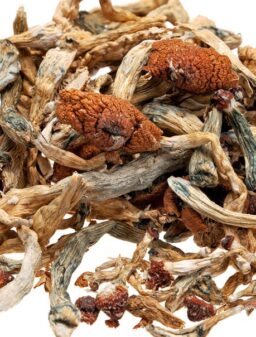
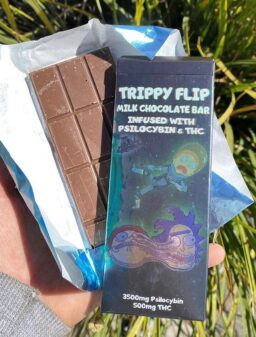
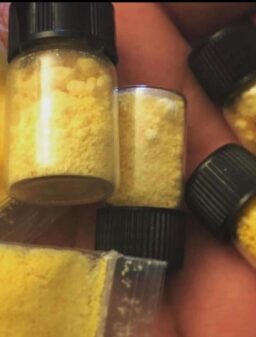
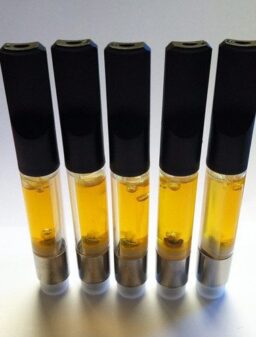
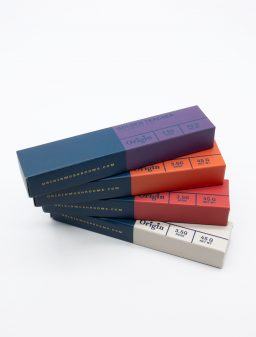

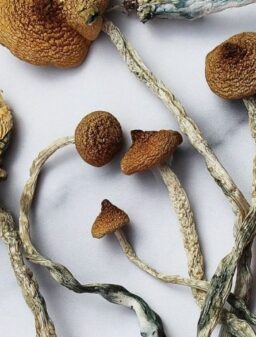
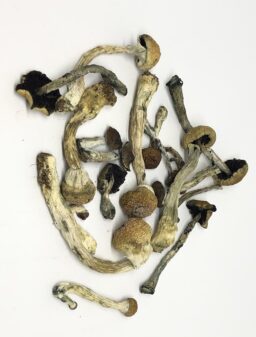
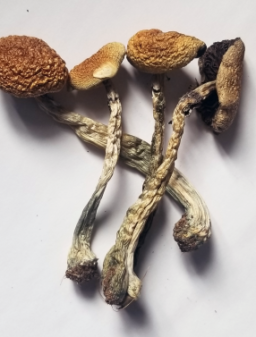
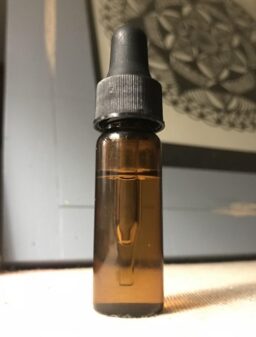
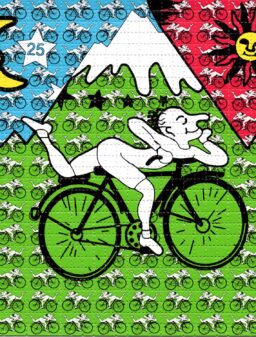
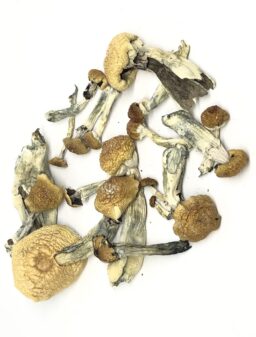
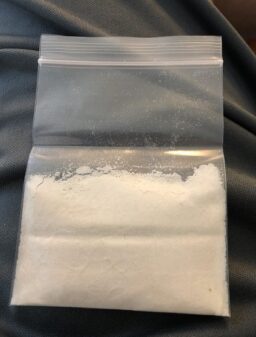
Carol –
Good and Mellow imo.
Kevin –
Haven’t tried them yet, but arrived quickly at a great price.
Joe –
Exactly as described
Steven –
My Favorite Mushroom Ever. Thanks for the fast delivery.
larry –
This is fantastic, what an amazing vapor quality, so flavorful and powerful. This is the best pen I have ever used in my life. It’s awesome!!!